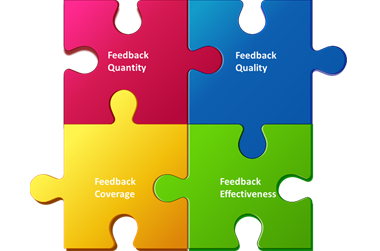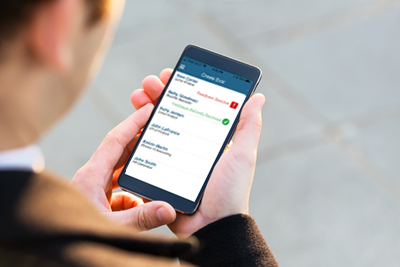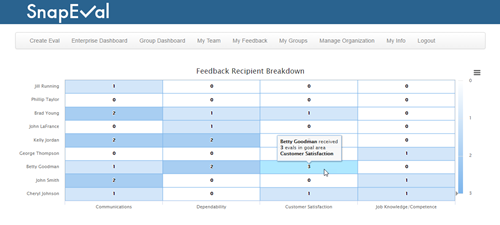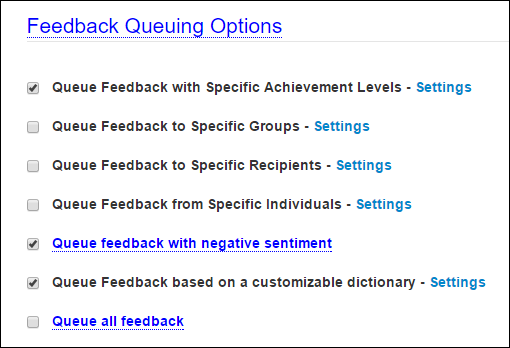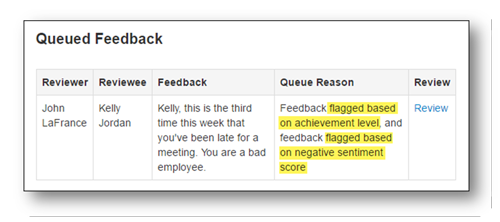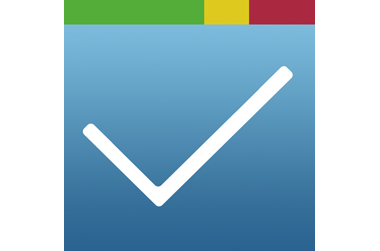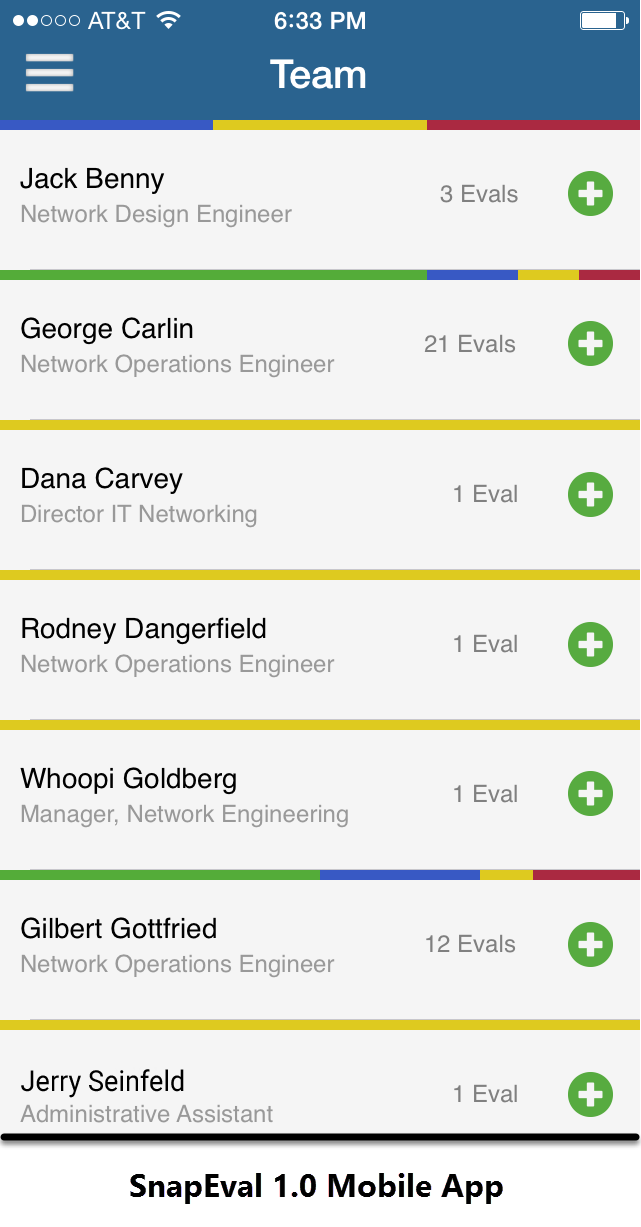Effective Performance Management for All Types of Employees

Employers and 56 Million U.S. Workers Aren’t Benefiting from Performance Management for All Types of Employees.
View This Blog as a Video
As of January 2017, the U.S. Bureau of Labor Statistics reports that there are almost 56 million workers whose jobs involve providing services and performing manual tasks.
These occupations include service; production; transportation; material moving; installation, maintenance and repair; and construction and extraction. They are classified as “Manual Workers” by the Bureau of Labor Statistics.
Manual Workers are 37% of the total workforce, while the combination of “Knowledge Workers” and “Office Workers” are the remaining 63% of the 150 million non-farm workers.
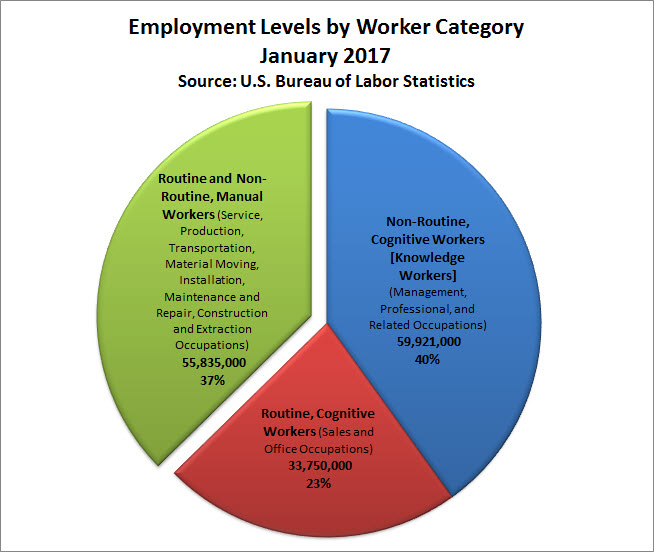

‘Continuous Performance Management’ is quickly gaining popularity as the term used to describe the process of augmenting or replacing traditional annual performance reviews with frequent manager-employee ‘check-in’ meetings about goals and performance.
Over the past three years, numerous articles and research papers have been published about organizations such as Adobe, Accenture, Deloitte, and Cisco transitioning to Continuous Performance Management.
These documented Continuous Performance Management initiatives have focused almost exclusively on Knowledge and Office Workers rather than Manual Workers. They underscore the benefits that have been realized from this transition including:
- Increasing employee engagement and performance
- Satisfying millennials’ desire for frequent feedback
- Improving organizational agility.
Organizations employing Manual Workers have additional incentives to implement performance management for all types of employees.
Turnover rates for Manual Workers generally far exceed turnover rates for Knowledge and Office Workers.
For example, food service and construction worker turnover rates can approach or exceed 100%, meaning a worker typically stays in a job for a year or less.

Turnover rates for managers, professionals, and office workers are generally in the range of 25% to 50%.
Among other problems, high worker turnover rates elevate an organization’s costs for recruiting and training replacement employees, and increase the organization’s exposure to potential legal action resulting from the separation by former employees.
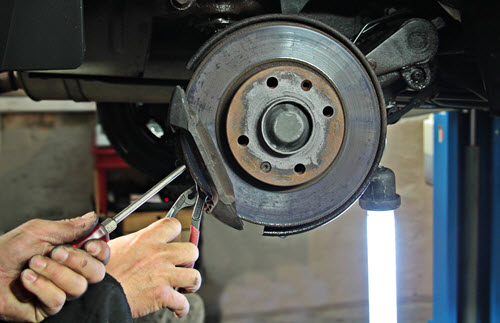
Continuous Performance Management for all types of employees can help in two ways:
- By increasing employee engagement through frequent manager-employee check-in meetings, Continuous Performance Management can help reduce the turnover rate for all employees in an organization, including Manual Workers.
- Because Continuous Performance Management requires employee performance feedback to be captured on an on-going basis in support of frequent check-in meetings, the organization automatically has documentation that can help to minimize the risk of legal action by former employees when separations do occur.
Despite the obvious benefits, today virtually all commercial Continuous Performance Management products focus exclusively on Knowledge and Office workers, and never on the 56 million Manual Workers. Why is this?



Automated Coaching: Many Continuous Performance Management products coach managers with online assessments, help and tools to help with difficult conversations, personality assessments and leadership. It’s difficult for ‘canned’ assessments and tools to effectively coach managers given the diversity of issues that they’re faced with when providing feedback, some of which is specific to the organization or the Manual Worker’s job function.
High Cost and Long-Term Commitments: Many Continuous Performance Management products have setup and configuration fees, require contracts with minimum annual costs, and are simply too expensive for cost-conscious organizations.
Can Continuous Performance Management be implemented in organizations with Manual Workers?
Yes. Properly designed, a state-of-the-art Continuous Performance Management solution can fully support Manual Workers, in addition to Office and Knowledge Workers.
Technology Access and Feedback Capture: In a state-of-the-art Continuous Performance Management solution, Manual Workers aren’t required to access any computing technology or have email accounts to be enrolled into the solution. Instead, supervisors are equipped to instantly capture ‘snapshots’ of performance feedback for workers at any time or place with a mobile app on a smartphone or any web-enabled device. With voice dictation support and a streamlined mobile app workflow, it only takes seconds to capture feedback.
Rather than using canned surveys or prompts to elicit feedback, supervisors are guided to capture feedback based on the worker’s goal areas. This develops a comprehensive view of the employee’s performance and development over time.
Because feedback is captured instantly at the time that the performance is observed or thought of, it’s most accurate and isn’t forgotten. The feedback snapshots are used as the basis for the frequent manager-employee check-in meetings that are the cornerstone of Continuous Performance Management.
Coaching: Rather than offering ‘canned’ advice to supervisors, a state-of-the-art Continuous Performance Management solution engages an organization’s own HR Professional by automatically queuing feedback for his or her review, editing, and approval or rejection. This allows the HR Professional to proactively coach managers with expert advice when necessary. By enabling the HR Professional to define the criteria that triggers the feedback to automatically be queued, only feedback that has the potential to be problematic is reviewed. This coaching occurs proactively, before the feedback is shared with the employee.

FREE or ultra-competitive cost, no setup fees, and no annual contracts: A state-of-the-art Continuous Performance Management solution is completely FREE for teams of up to 10 members (with all features enabled and no time limitation), is less than 8¢ per employee per day for larger teams or entire organizations, and has no setup fees or annual contracts.
Delivering Performance Management for all types of employees that supports Manual Workers isn’t a theoretical exercise at SnapEval. For example, numerous organizations use SnapEval with workers providing services such as commercial grounds keeping and snow removal. In addition to supporting Manual Workers, SnapEval is also used extensively with Knowledge and Office Workers.
Now that you know more about SnapEval, why not sign up for a FREE account for your team?
I’m David Yeaple, VP of Business Development and Product Management at SnapEval, LLC. I’d love to get your feedback about this blog, our products, or anything else related to employee performance management. You can reach me at dyeaple@SnapEval.com or +1 585-414-5000.

